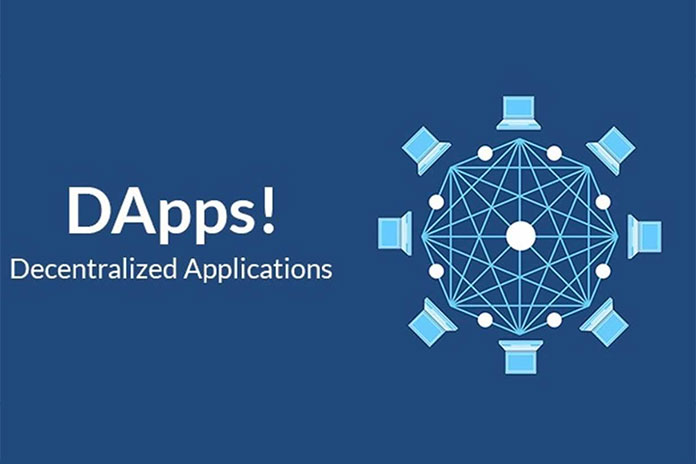The adoption of blockchain technology, pioneered by cryptocurrencies like Bitcoin and Ethereum, skyrocketed in 2021. As time has progressed, the blockchain scene has changed drastically. The emergence of dApps is one of the most exciting and game-changing developments in the blockchain industry. In this blog, we’ll delve into the fundamentals of building dApps and how to develop dApps, covering key principles and blueprints that are crucial for developers and entrepreneurs seeking to make their mark in the fascinating world of blockchain technology (based on many years of Topflight Apps’ experience).
DApps vs. conventional apps- Differentiation
Traditional apps run on centralized servers managed by enterprises, but dApps run on decentralized blockchain networks. There is no central authority in the domain of dApps; users jointly manage the network. Blockchain technology ensures data security and open distribution.
dApps are the backbone of the Web3 revolution, giving users full freedom and combating traditional apps’ data monetization tactics. Although they appear to be traditional apps on the surface, dApps operate on blockchains and frequently use digital tokens for functionality.
What is the market saying about dApps?
At a CAGR of 56.1% from 2019 to 2027, the dApps Market is expected to grow from its 2019 valuation of USD 10.52 Billion to reach USD 368.25 Billion. The global dApps Market is growing because of the increasing need for quick transaction processing and the benefits of dApps, such as their transparency, reliability, flexibility, and scalability.
DApps features that make it interesting
Decentralized nature
Decentralization is the defining characteristic of developing dApps. Blockchain technology powers the decentralized peer-to-peer networks on which these apps operate. With this level of autonomy, there is no single point of failure to worry about, and they are also more capable to withstand censorship.
Accessible DeFi products
dApps have transformed access to Decentralized Finance (DeFi). By removing the need for traditional intermediaries such as banks, they enable individuals worldwide to easily participate in lending, borrowing, and trading of assets.
Secure
Safeguarding sensitive data is a top priority for decentralized applications. These programs utilize the blockchain’s strong cryptography capabilities to safeguard user information. Users are more likely to trust the system since their transactions are publicly visible on the blockchain, and it is exceedingly difficult for hostile actors to tamper with or jeopardize data.
Fast
Efficiency is a primary focus in the development of decentralized applications. In comparison to more conventional monetary systems, blockchain-supported transactions can be processed quickly. This fast transaction processing is especially useful for applications like decentralized exchanges since it guarantees that transactions and operations will be carried out promptly.
Also Read: Types Of Blockchain And How The Business Will Change Using Blockchain
Developing dApps in an efficient manner
To create a decentralized application with blockchain, follow the steps mentioned below:
Generating the heart (smart contract)
The smart contract is the foundation of every decentralized application (dApp), specifying how the app should be operated on the blockchain. It is critical to create smart contract code that is both efficient and safe to avoid exploits and guarantee the timely and accurate completion of transactions. For further efficiency, consider utilizing pre-existing blockchain platforms, such as Ethereum, which offer powerful development tools and smart contract templates to create a dApp on Ethereum.
Developing the face (front-end)
In order to create a decentralized app, creating an appealing and user-friendly front end is critical for attracting and retaining users. The next step is to design the user interface (UI) for your decentralized app. Use web development tools such as HTML, CSS, and JavaScript to create responsive and intuitive user interfaces that provide a consistent user experience across devices and browsers.
Designing the backbone (back-end)
Your app’s back end manages essential tasks, including storing data, communicating with servers, and interacting with the blockchain network. Implementing a solid back-end architecture that effectively handles data and guarantees a secure connection with the blockchain using the right programming languages and frameworks is essential for creating a strong and responsive decentralized application (dApp).
Testing the system
Before releasing your dApp, it is essential to conduct extensive testing to detect and fix any problems. Build-in unit testing to look at individual elements, integration testing to ensure everything works together, and a security audit to find any holes that could lead to user data or financial information being stolen. A safe and reliable dApp is the result of thorough testing.
Deployment and maintenance
After your decentralized application has been thoroughly tested, you can release it to the public on the blockchain network of your choice. Maintaining your system regularly ensures that you can respond to emerging security threats, enhance performance, and add new features as they become available.
Key Takeaway
Smart contract development, user-friendly front-end design, robust back-end infrastructure, rigorous testing, and continuing maintenance are all necessary for developing dApps. Accepting the decentralized nature of blockchain technology empowers users while maintaining security and efficiency. By following five critical steps, developers and entrepreneurs can maximize the potential of dApps, contributing to the transformational force of decentralized applications in the blockchain ecosystem.
Also Read: How To Build Your First Blockchain App: A Simple Guide To Getting Started

